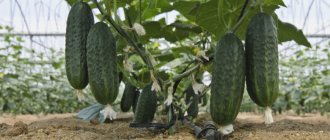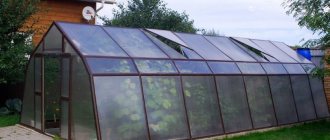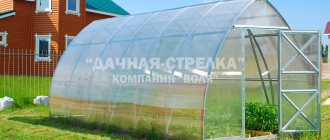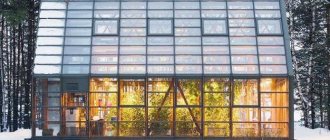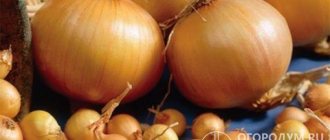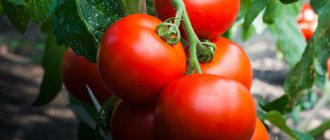Anyone who grows seedlings, vegetables, and flowers in greenhouses does not need to be told how important lighting is for good plant growth. Light is a necessary condition for photosynthesis or nutrition of greenhouse inhabitants. The greatest need for light is for seedlings and young plants.
To satisfy this need, in spring and autumn (and even winter), by maximizing daylight hours, gardeners arrange additional lighting in greenhouses. Moreover, if this is possible in private greenhouses, then in industrial greenhouses it is simply necessary for the enterprise to be profitable.
However, it is not enough to turn on some incandescent light bulb and expect a rich harvest. Today, lighting in a greenhouse can be provided in different ways, but sodium lamps for greenhouses are considered optimal.
Characteristics of sodium lamps for greenhouses
To date, no lamps have been created that could create a 100% imitation of sunlight. Each of them has only one emission spectrum predominant.
As for seedlings, during the growing season they especially need the blue and red spectrum. The first is needed for the growth and full development of seedlings, and the second, in turn, stimulates their flowering and subsequent fruiting.
For each period, accordingly, it needs its own backlight.
Light and its importance for plants
With a lack of daylight in winter and autumn, crops begin to wither and become sick. The key to the survival and healthy existence of plants is photosynthesis. Full photosynthesis is impossible without light. When plants produce chlorophyll, they fully absorb the carbon dioxide needed for nutrition. The formation of organic substances in greenhouse crops is impossible without solar and artificial lighting.
Signs of lack of lighting:
- changes in plant shape (for example, unnatural elongation of cuttings and stems);
- their slow growth;
- lack of flowering;
- drop in yield;
- the lower foliage turns yellow.
You may be interested in:
DIY lighting for seedlings Not a single living organism is capable of existing without light. Plants, especially in the initial stages, need...Read more...
Operating principle
Sodium lamps for greenhouses are classified as gas-discharge lamps. Gas discharge devices are actively used not only in greenhouses, but also in squares, roads, streets, warehouses and industrial premises. The gas-discharge environment inside the devices is created using sodium vapor, which glows red-orange.
For comparison: in mercury, a white glow predominates. As for the radiation itself, it is created by arc discharges. The operating principle of this type of devices is based on them.
The lamp bulb is a cylindrical tube made of fire-resistant glass. It is filled with a mixture of mercury and sodium. It contains a burner made of aluminum oxide.
Reference. When designating such a lighting device, specialists use the abbreviation DNaT, which means “sodium arc tube lamp.” The main manufacturers of these products are two companies: Silvania and Philips.
To start such devices and regulate the current in them, there is ballast equipment. In addition, you will need an electronic ballast with the following advantages:
- Thanks to its operation, the power is stabilized, so the lamps last longer.
- Electricity consumption is reduced by almost 30%.
- The frequency of the current increases, the light output increases.
- There is no flickering effect.
Principle of operation
The external cylinder of DNATa contains a burner tube made of aluminum ceramics. The burner is filled with a mixture of sodium and mercury vapor. When current is supplied, an electric arc occurs between the electrodes, which heats the burner to the required temperature. As it heats up, the brightness of the radiation generated by sodium ions increases. There is an absolute vacuum inside the outer flask, which protects the device from explosion due to high temperature.
Did you know? Vortec Industries, a company from Canada, became the manufacturer of the most powerful arc lamp in 1984. The flask of the device was filled with argon, and the luminous flux power was 1.2 million candelas.
Types of lighting fixtures
Sodium lamps are divided into two categories: high and low pressure.
In plant growing, high-pressure sodium lamps are used for greenhouses. NLVD are divided into the following types:
- HPS are ordinary arc lamps with powerful light emission. One of them is quite enough to illuminate a small garden building .
The emission spectrum of such devices can be changed by combining them with other types. - DNaZ – lighting sources with a mirror reflective layer.
The layer is applied to the inner surface of the flask. It is effectively protected from adverse weather conditions and mechanical stress and increases productivity. Sintered electrodes are located inside the flask. They provide high efficiency and reduce energy consumption . Compared to HPS, mirror lamps are not powerful enough. - DRI and DRIZ are the most advanced devices for greenhouses. Metal halide devices are resistant to current surges, they last a long time , they have the most optimal radiation spectrum necessary for seedling growth, and high efficiency.
But they are not without some disadvantages, the most important of which is the cost, which is quite high for the average consumer. Plus, they require a special cartridge to use. This makes it difficult to replace failed lamps.
Scientific approach
The leader in the field of improving greenhouse lighting is the Dutch corporation Philips, which is not surprising, given the leading position of the greenhouse industry in the Netherlands. The company conducted scientific and practical research (in 2012 in Ukraine, in 2013 in Holland), which proved that sodium lamps are the most preferable for plants. They are more efficient than compact fluorescent lamps, which have lower luminous output and do not provide the optimal light spectrum. In parallel, it has been proven that incandescent lamps and mercury lamps consume too much electricity to be economically viable.
Even better results are achieved if the plants are illuminated not only from above, but also from the sides, between the rows. Economical light-emitting diodes (LEDs) are quite suitable for this. The combination of sodium lamps with LED lamps contributes to greater productivity. In 2012, the first industrial greenhouse was created in Uman (Ukraine), where these types of lighting devices were combined. The area of the site under mixed lighting with LED and sodium lamps was 6000 m2. In total, 1230 LED modules and 870 lamps with HPS lamps were installed in the greenhouse. The experiment showed that the yield of tomatoes (subject to other requirements) can reach 73 kg/m2 annually.
Then, thanks to a similar experiment in the Netherlands (2013), the combined use of HPS and SD led to a 30% increase in yield. Subsequently, the technology was adopted in England, Denmark, Canada, Japan, China and other countries.
Photo
The photo shows sodium lamps for greenhouses:
Light spectrum and its influence
Plants respond best to red and blue rays of the light spectrum. When lighting a greenhouse in winter, you need to ensure that the crops are not deprived of natural light. Also, you should not use rays of only one spectrum, if we are not talking about colors. This is useful for flowers: their color becomes rich and bright.
Rays of light affect greenhouse crops in different ways. Blue light stimulates photosynthesis, orange and red improve flowering. There should not be many of these flowers, otherwise the plants die. Ultraviolet radiation promotes the formation of vitamins. Thanks to it, the seedlings become resistant to winter cold.
Important!
Green and yellow lights cannot be used. Plants become deformed and their stems become thin.
When selecting lamps for a greenhouse, their colors should be different. When installing equipment, it is important to comply with lighting standards in accordance with the requirements in the region and the characteristics of the crops.
Features of NLVD
The luminous flux, luminous efficiency and burning duration depend on the power of the NLVD. Color rendering is improved through the use of luminescent materials coupled with gas mixtures.
As for power , it must match the application. To illuminate seedlings, devices with parameters of 70-400 W are selected, which can serve in greenhouses in any season of the year.
Bulbs with higher ratings will simply burn the vegetables. Therefore, before purchasing them, be sure to consult with a specialist .
Night illumination
The use of lighting devices around the clock will not benefit plant crops. They need about 6 hours of complete darkness to rest. There are vegetables, berries and plants that need individual lighting conditions.
Cucumbers cannot tolerate a pause between different types of light. When growing cucumbers, natural and artificial lighting should alternate evenly. After the first cucumber seedlings sprout, they need to be illuminated regularly. Onions and herbs need additional lighting only at the initial stage of growth. Strawberries require additional lighting during the day and at night.
Advantages and disadvantages of high pressure sodium lamps
NLVDs have many advantages:
- They are economical . They consume little electricity and are affordable.
- Durability : lasts about 20,000 hours.
- High light output compared to simple incandescent lamps.
- Thermal radiation . When the NLVD glows, a large amount of heat is released. Therefore, you can save a lot of money on heating a greenhouse, especially during cold weather.
- The red-orange spectrum of radiation allows you to accelerate the processes of flowering and fruit formation, which contributes to the appearance of a rich harvest. And the blue part, as a rule, is provided by natural light.
- High efficiency (30%). It exceeds that of most artificial lighting sources.
Attention! NLVD is best used in the final stages of seedling growth. If you provide lighting in the early stages, the shoots will begin to grow faster, elongate and form long stems. Proper growth can be ensured by combining the devices with metal halide lighting sources.
Disadvantages of NLVD
- The big disadvantage of NLVDs is strong heating , and they flare up for at least several minutes. Their lighting attracts insect pests to greenhouses, which cause noticeable damage to seedlings.
- NLVDs are unsafe . The filler is a mixture of mercury and sodium. Accidentally breaking a lamp can put an end to the entire harvest.
- The operation of devices depends on voltage . If its fluctuations in the network exceed 10%, such lamps are not recommended for use inside greenhouses.
- When it's cold, lighting fixtures become less effective . Therefore, their use in unheated shelters is limited.
For reference! Plants in greenhouses where NLVDs work often appear pale and unhealthy. But you shouldn't be afraid of this. This is an optical illusion. Simply, sodium lighting noticeably distorts our color perception.
Environmental issues
The creation of modern technologies for growing greenhouse plants is associated with the use of high-intensity discharge lamps, in particular sodium lamps. Their widespread use is a positive factor in the intensification of this production, although it is associated with a serious environmental problem. The vast majority of modern discharge lamps contain a toxic substance - mercury. Sodium lamps, for example, may contain sodium amalgam (an alloy of mercury). If such a lamp breaks over the plantings inside the greenhouse, the plants placed under it (greens, vegetables, seedlings, indoor flowers) become unusable.
The main direction of improving environmental friendliness is the creation of highly efficient mercury-free gas-discharge lamps. Recently, this work has been carried out by individual lighting companies, including in the CIS countries. Sodium lamps with a reduced amount of mercury in the discharge tube and completely mercury-free models already exist and are increasingly used in greenhouse farming.
Lighting time
The lighting time depends on how light-loving the crop is. For tomatoes, cucumbers, salads and bell peppers, the length of daylight should be 10 hours or more.
There are short day plants. It is the short daylight hours that cause them to begin to bloom. When daylight hours become longer, their growing season comes to an end and they begin to develop as usual. In long-day plants, flowering occurs when the daylight hours are more than 13 hours. If it is shorter, their fruits will become small or stop appearing altogether.
There are cultures for which the length of daylight hours does not matter. They grow independently of it, the main thing is that there is not too little light. If there is not enough of it, the plants will die.


